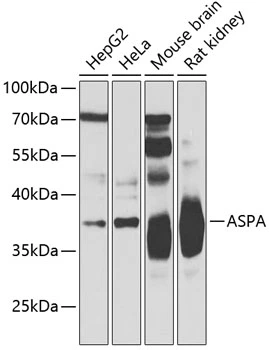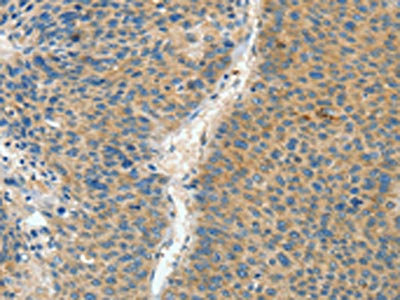Aspartoacylase antibody
GTX110699
ApplicationsImmunoFluorescence, Western Blot, ImmunoCytoChemistry
Product group Antibodies
ReactivityHuman, Mouse
TargetASPA
Overview
- SupplierGeneTex
- Product NameAspartoacylase antibody
- Delivery Days Customer9
- Application Supplier NoteWB: 1:5000-1:20000. ICC/IF: 1:100-1:1000. *Optimal dilutions/concentrations should be determined by the researcher.Not tested in other applications.
- ApplicationsImmunoFluorescence, Western Blot, ImmunoCytoChemistry
- CertificationResearch Use Only
- ClonalityPolyclonal
- Concentration1 mg/ml
- ConjugateUnconjugated
- Gene ID443
- Target nameASPA
- Target descriptionaspartoacylase
- Target synonymsACY2, ASP, aspartoacylase, ACY-2, aminoacylase 2, cytosolic aspartoacylase
- HostRabbit
- IsotypeIgG
- Protein IDP45381
- Protein NameAspartoacylase
- Scientific DescriptionThis gene encodes an enzyme that catalyzes the conversion of N-acetyl_L-aspartic acid (NAA) to aspartate and acetate. NAA is abundant in the brain where hydrolysis by aspartoacylase is thought to help maintain white matter. This protein is an NAA scavenger in other tissues. Mutations in this gene cause Canavan disease. Alternatively spliced transcript variants have been found for this gene. [provided by RefSeq]
- ReactivityHuman, Mouse
- Storage Instruction-20°C or -80°C,2°C to 8°C
- UNSPSC12352203
References
- Roth LM, Zidane B, Festa L, et al. Differential effects of integrase strand transfer inhibitors, elvitegravir and raltegravir, on oligodendrocyte maturation: A role for the integrated stress response. Glia. 2021,69(2):362-376. doi: 10.1002/glia.23902Read this paper
- Long PM, Moffett JR, Namboodiri AMA, et al. N-acetylaspartate (NAA) and N-acetylaspartylglutamate (NAAG) promote growth and inhibit differentiation of glioma stem-like cells. J Biol Chem. 2013,288(36):26188-26200. doi: 10.1074/jbc.M113.487553Read this paper




